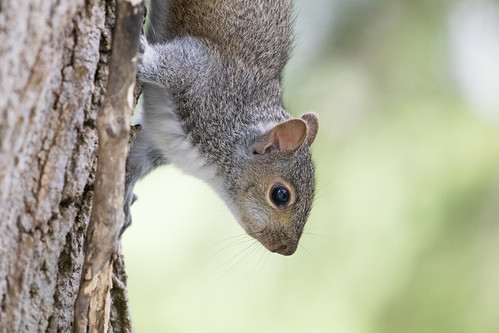There are two kinds of people, at least with regard to Daylight Saving Time. Just about all of us are on the same page in hating the twice-a-year time change. The element that divides us is which year-round time system we’d rather keep. Some prefer Standard Time—that is, setting our clocks so that noon in the center of our time zone is when the sun is most directly overhead, what the very term “high noon” is supposed to mean. Others prefer Daylight Saving Time, in which clocks are set an hour later than that.
Many bird counts, including the ones I’ve been involved in, use Standard Time for entering data. When I was counting at the Lakewood Pumping Station and at Hawk Ridge, we always called it Bird Time, because birds take no notice of human clocks. The time of sunrise changes in regular increments, earlier each day in spring, later each day in fall, and birds never make a sudden full hour jump in their daily rhythms for no good reason.
Even if I didn’t think of it as Bird Time, I’d still definitely be a year-round Standard Time person. When I was a teacher, starting in March each spring I’d go birding before school every morning. Back then, Daylight Saving Time didn’t begin until the last weekend in April, exactly when warbler migration was kicking in, and I’d sorely resent losing a full hour of birding before I had to head to work. Other people prefer that extra hour of sunlight after work, but birds aren’t so conspicuous at the end of the day.
When we finally switch back to Standard Time in November, we lose an hour of light in the afternoon, putting it back where I like it, in the morning. In fall and winter, I usually wake up between 5 and 6, make my cup of coffee while it’s still dark, and then sit with my dog Pip in my office writing or thinking as the sky changes color and birds start flying about. As days get shorter, sunrise keeps getting later.
Today, November 21, the sun rises at 7:20 here in Duluth; if we were still on Daylight Saving Time, I’d not seen the sunrise until 8:20. By then, the phone might be ringing or I might be off at an appointment. Things are just too bustling by then to enjoy my quiet alone time. No, I like my sunrises early.
This time in November, the first bird to appear in my yard, at just about sunrise, will usually be a cardinal or junco. Both seem to have good low-light vision. Chickadees and woodpeckers sleep in a little longer—maybe being within a cavity helps reduce heat loss overnight, making breakfast a little less urgent, or maybe the outside light needs to be a bit brighter to be noticeable through the entrance hole.
Within a few minutes after sunrise, all the birds seem to be up and at ‘em. The first one I hear through tightly closed windows is usually a crow, but sometimes the local Pileated Woodpecker yells out first.
Right outside my window is a box elder with a squirrel stick nest. It's too high in the branches for me to see from my desk, but I do notice when one of my squirrels emerges from it to sit for a bit on the broken limb, just three or four feet from the windowpane. She looks out at the morning rather the way I do, except she has no cup of coffee, and she sits on the cold side of the glass. After looking every which way to verify that the coast is clear, she uses her paws and a bit of squirrel spit to wash her face, her body staying cozy under her thick furry tail.
Like birds, squirrels never think about human constructs of time. My squirrel knows that when her face is clean, it’s breakfast time. She starts down the trunk head first, her back legs hanging onto the broken limb for an extra moment as she lets go with her front legs, reaches her paws way out, and stretches. Sometimes the squirrely yoga pose lasts a moment longer, as she opens her mouth in a wide yawn. I smile. Another day has started, and all is right with the world, or at least my little corner of it.
